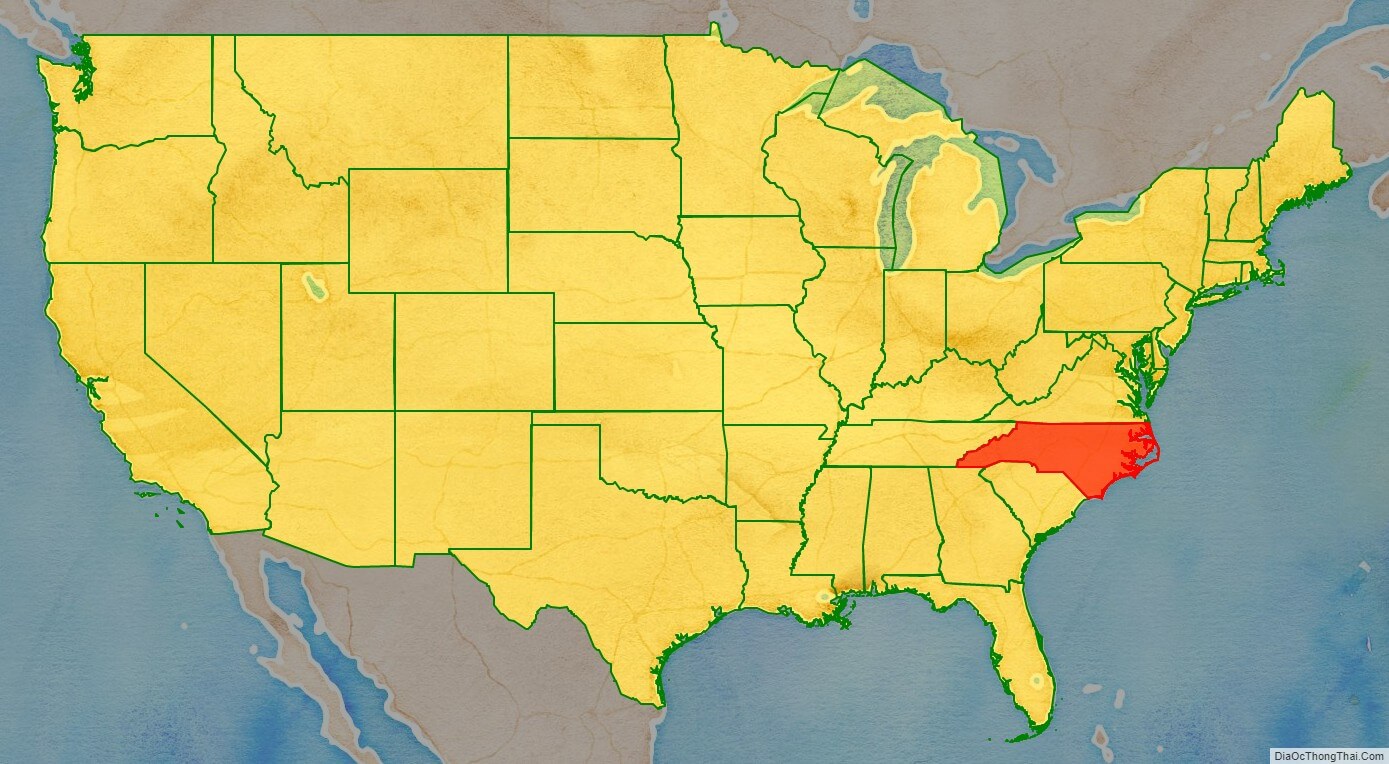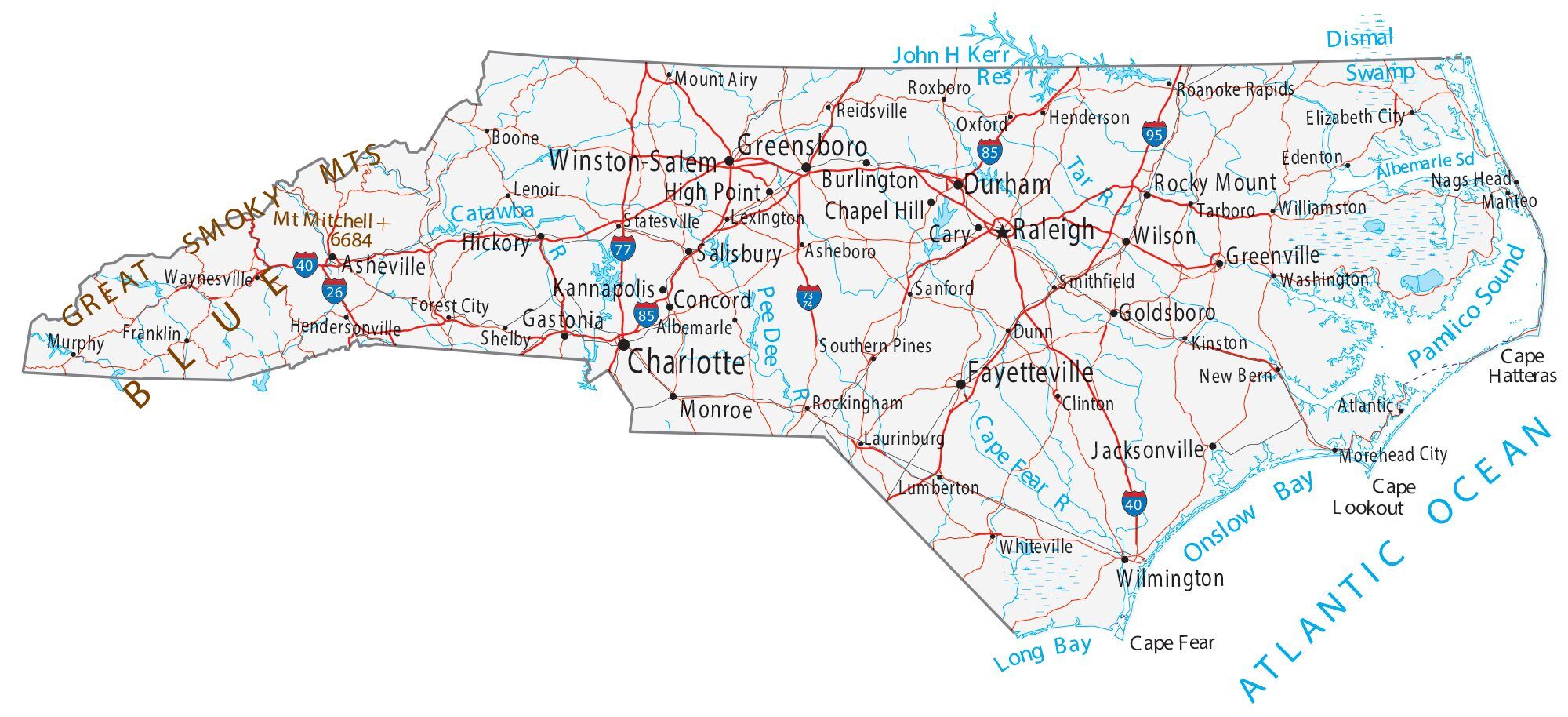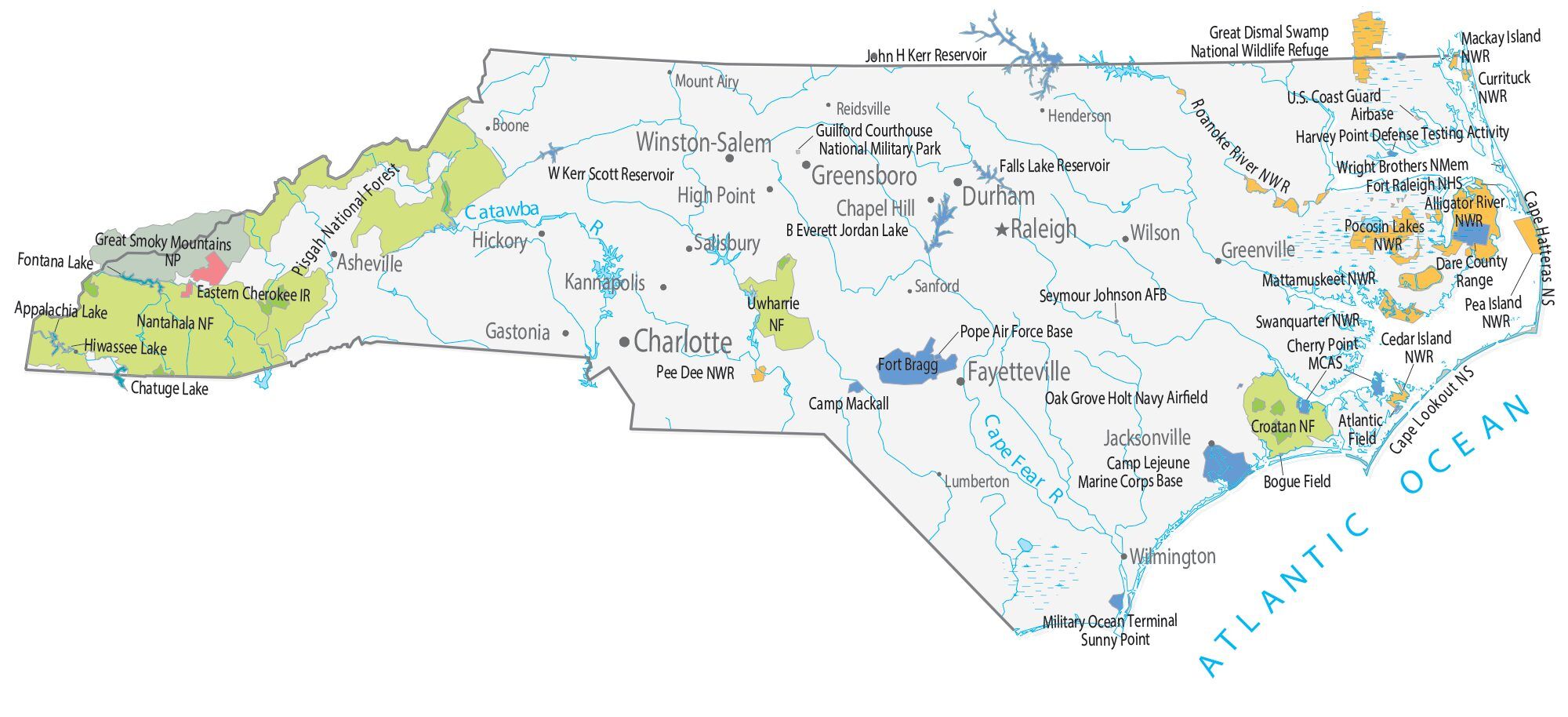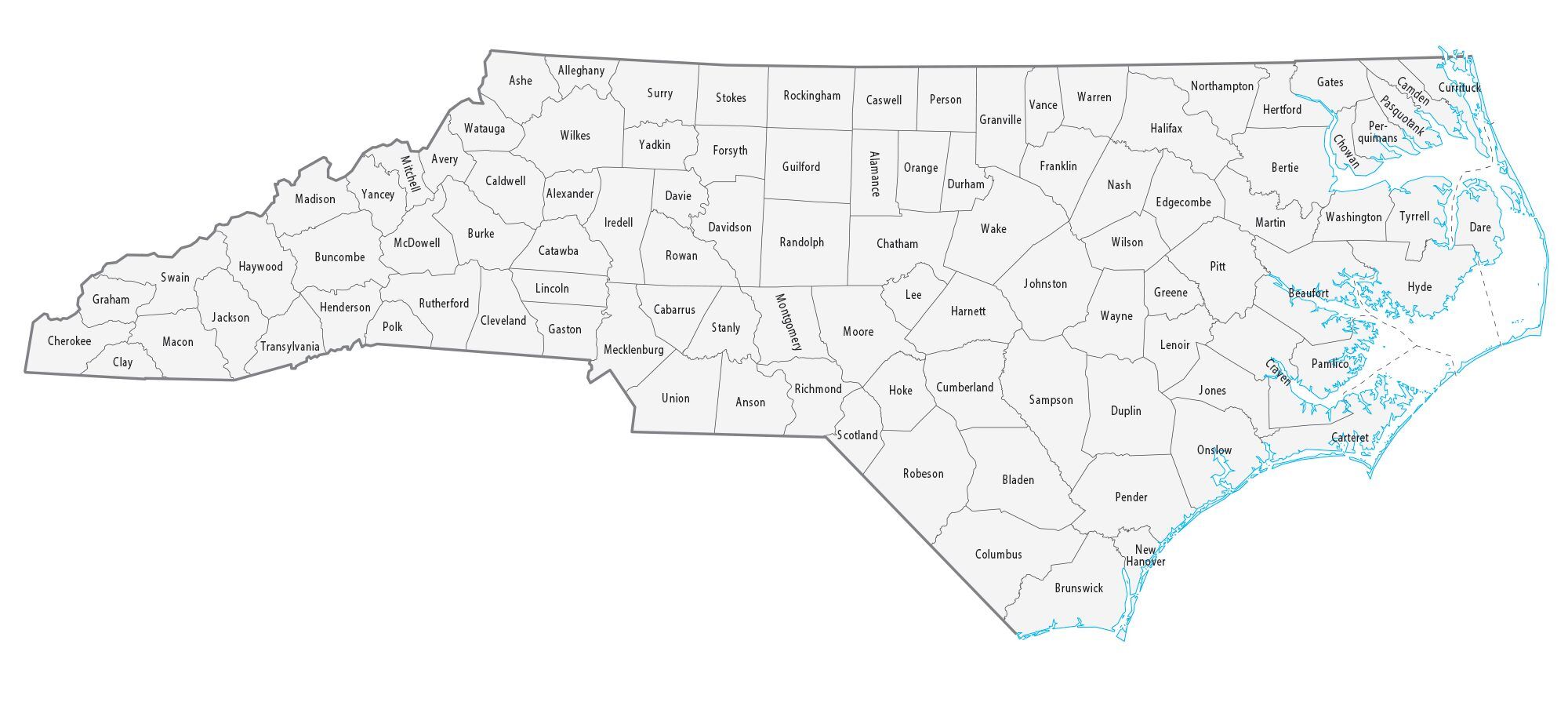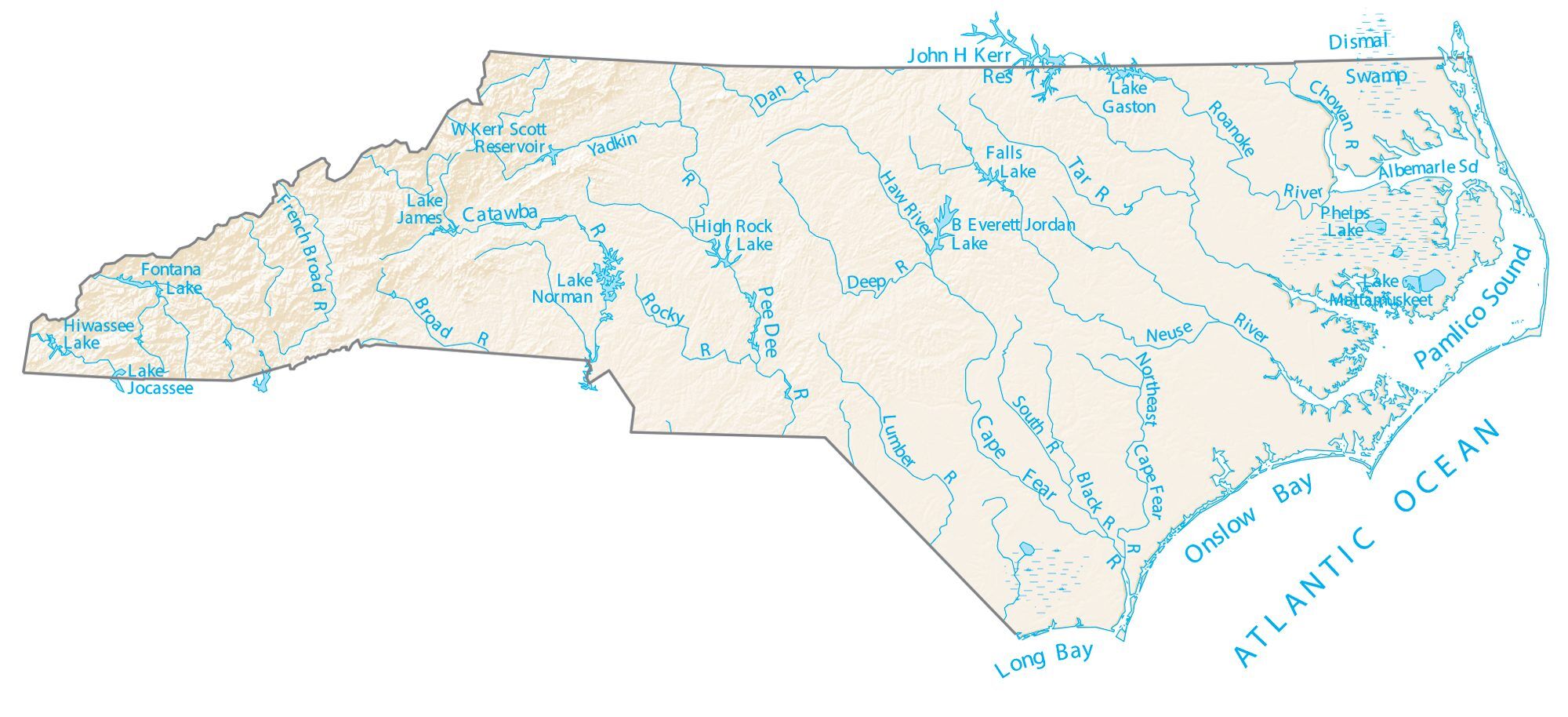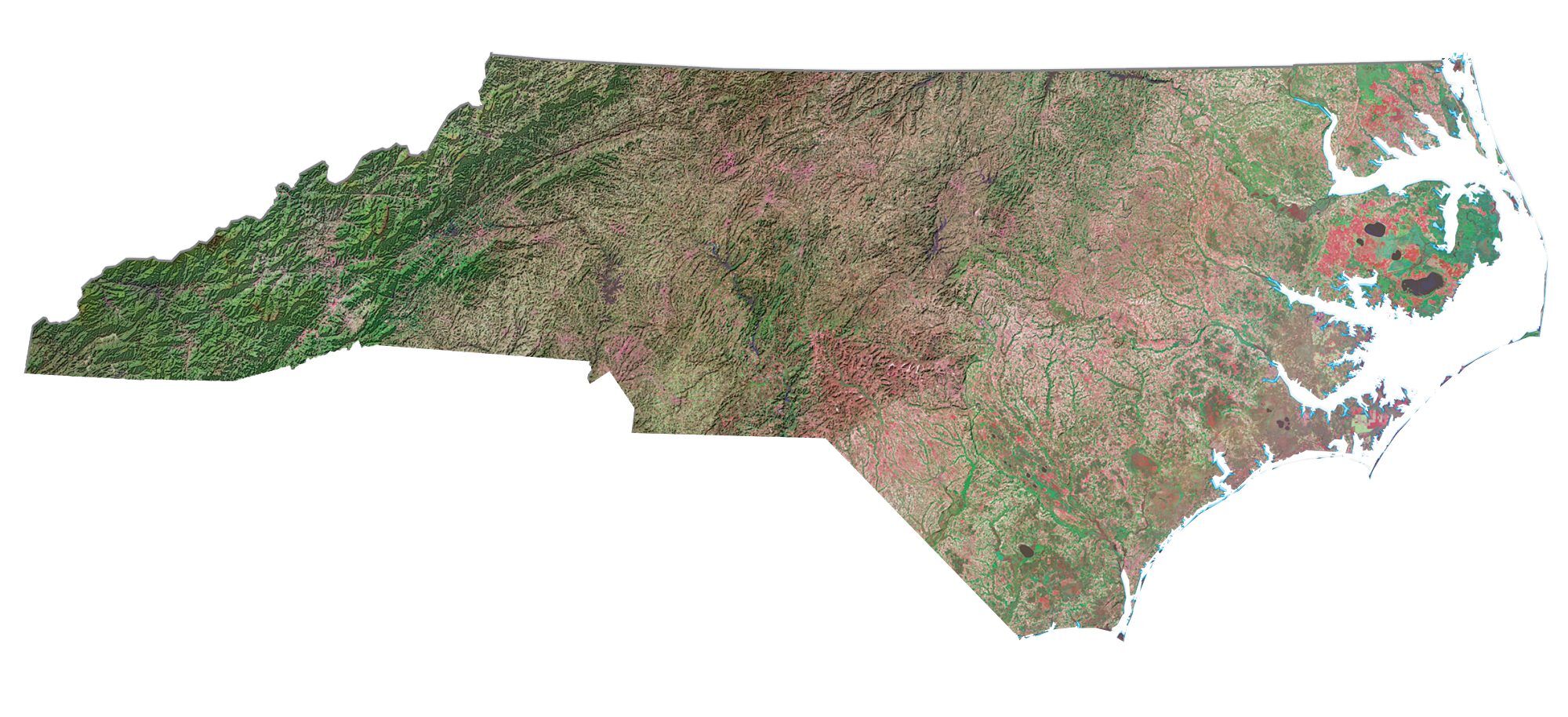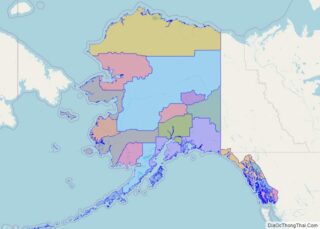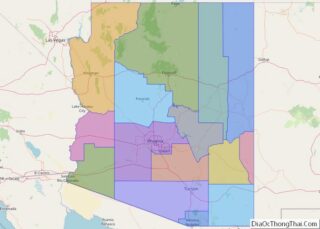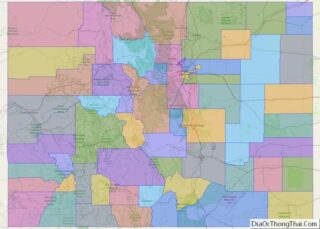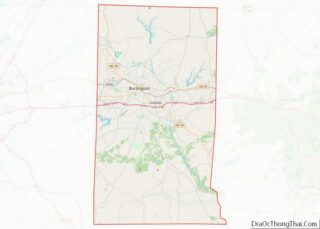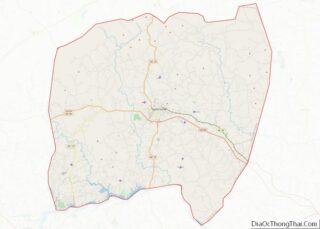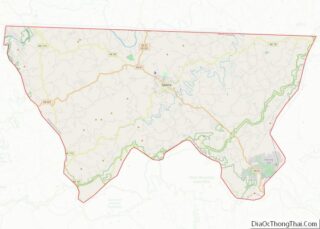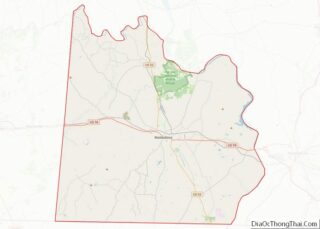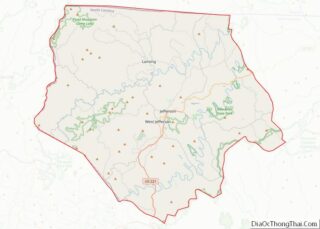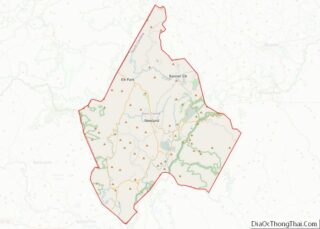North Carolina (/ˌkærəˈlaɪnə/ (listen)) is a state in the Southeastern region of the United States. The state is the 28th largest and 9th-most populous of the United States. It is bordered by Virginia to the north, the Atlantic Ocean to the east, Georgia and South Carolina to the south, and Tennessee to the west. In the 2020 census, the state had a population of 10,439,388. Raleigh is the state’s capital and Charlotte is its largest city. The Charlotte metropolitan area, with a population of 2,595,027 in 2020, is the most-populous metropolitan area in North Carolina, the 21st-most populous in the United States, and the largest banking center in the nation after New York City. The Raleigh-Durham-Cary combined statistical area is the second-largest metropolitan area in the state and 32nd-most populous in the United States, with a population of 2,043,867 in 2020, and is home to the largest research park in the United States, Research Triangle Park.
The earliest evidence of human occupation in North Carolina dates back 10,000 years, found at the Hardaway Site. North Carolina was inhabited by Carolina Algonquian, Iroquoian, and Siouan speaking tribes of Native Americans prior to the arrival of Europeans. King Charles II granted eight lord proprietors a colony they named Carolina after the king and which was established in 1670 with the first permanent settlement at Charles Town (Charleston). Because of the difficulty of governing the entire colony from Charles Town, the colony was eventually divided and North Carolina was established as a royal colony in 1729 and was one of the Thirteen Colonies. In 1755, colonial North Carolina received its first postmaster, James Davis, appointed by Benjamin Franklin. The Halifax Resolves resolution adopted by North Carolina on April 12, 1776, was the first formal call for independence from Great Britain among the American Colonies during the American Revolution.
On November 21, 1789, North Carolina became the 12th state to ratify the United States Constitution. In the run-up to the American Civil War, North Carolina declared its secession from the Union on May 20, 1861, becoming the tenth of eleven states to join the Confederate States of America. Following the Civil War, the state was restored to the Union on July 4, 1868. On December 17, 1903, Orville and Wilbur Wright successfully piloted the world’s first controlled, sustained flight of a powered, heavier-than-air aircraft at Kitty Hawk in North Carolina’s Outer Banks. North Carolina often uses the slogan “First in Flight” on state license plates to commemorate this achievement, alongside a newer alternative design bearing the slogan “First in Freedom” in reference to the Mecklenburg Declaration and Halifax Resolves.
North Carolina is defined by a wide range of elevations and landscapes. From west to east, North Carolina’s elevation descends from the Appalachian Mountains to the Piedmont and Atlantic coastal plain. North Carolina’s Mount Mitchell at 6,684 ft (2,037 m) is the highest point in North America east of the Mississippi River. Most of the state falls in the humid subtropical climate zone; however, the western, mountainous part of the state has a subtropical highland climate.
| Before statehood: | Province of North Carolina |
|---|---|
| Admitted to the Union: | November 21, 1789 (12th) |
| Capital: | Raleigh |
| Largest city: | Charlotte |
| Largest metro and urban areas: | Charlotte |
| Elevation: | 700 ft (210 m) |
| Total Area: | 53,819 sq mi (139,390 km) |
| Area Rank: | 28th |
| Total Population: | 10,698,973 |
| Population Rank: | 9th |
| Population Density: | 219.64/sq mi (84.80/km) |
| Population Density Rank: | 15th |
| Median Household Income: | $52,752 |
| Income Rank: | 39th |
| Demonym(s): | North Carolinian (official); Tarheel (colloquial) |
| USPS abbreviation: | NC |
| ISO 3166 code: | US-NC |
| Website: | www.nc.gov |
Online Interactive Map
Click on ![]() to view map in "full screen" mode.
to view map in "full screen" mode.
North Carolina location map. Where is North Carolina state?
North Carolina Road Map
North Carolina Map – Roads & Cities
North Carolina Street Map
North Carolina State Map – Places and Landmarks
North Carolina Political Map
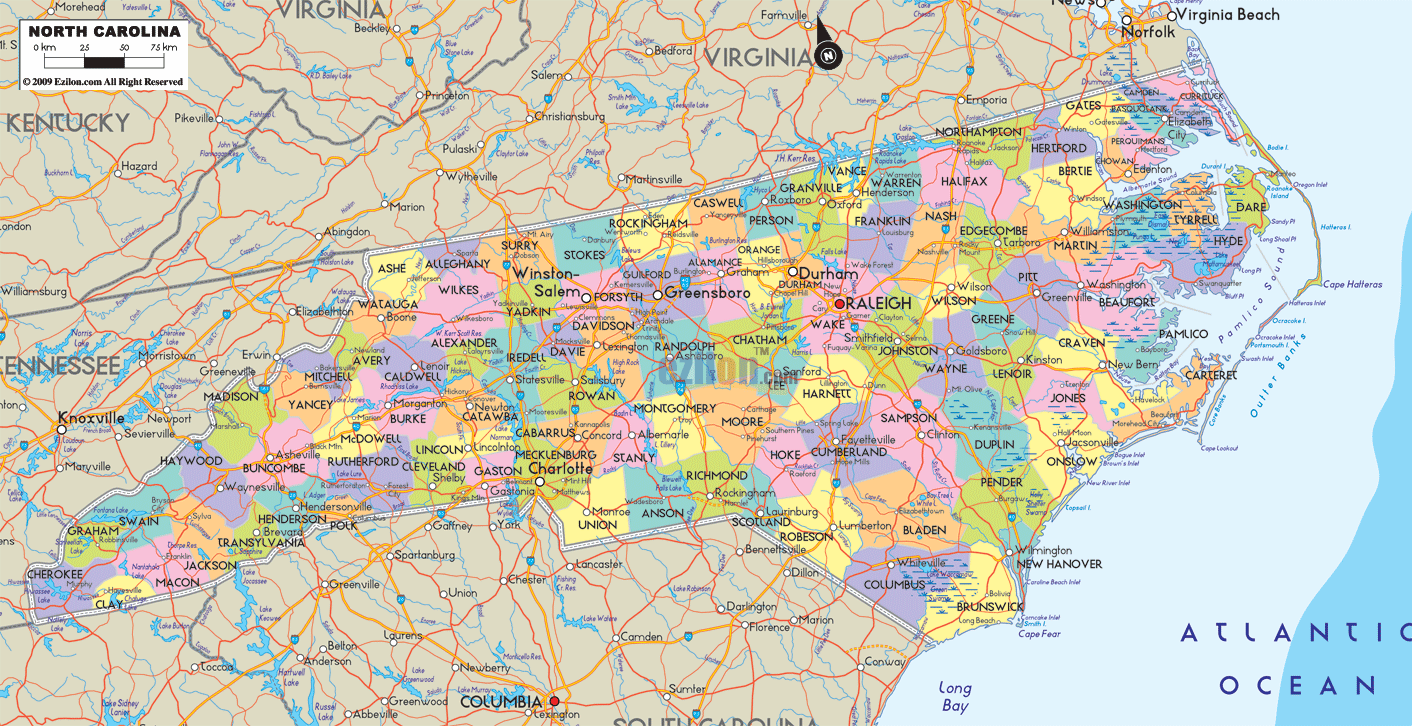
North Carolina Lakes and Rivers Map
Geography
North Carolina is bordered by South Carolina on the south, Georgia on the southwest, Tennessee on the west, Virginia on the north, and the Atlantic Ocean on the east. The United States Census Bureau places North Carolina in the South Atlantic division of the southern region.
North Carolina consists of three main geographic regions: the Atlantic coastal plain, occupying the eastern portion of the state; the central Piedmont region, and the mountain region in the west, which is part of the Appalachian Mountains. The coastal plain consists of more specifically-defined areas known as the Outer Banks, a string of sandy, narrow barrier islands separated from the mainland by sounds or inlets, including Albemarle Sound and Pamlico Sound, the native home of the venus flytrap, and the inner coastal plain, where longleaf pine trees are native.
So many ships have been lost off Cape Hatteras that the area is known as the “Graveyard of the Atlantic”; more than a thousand ships have sunk in these waters since records began in 1526. The most famous of these is the Queen Anne’s Revenge (flagship of the pirate Blackbeard), which went aground in Beaufort Inlet in 1718.
The coastal plain transitions to the Piedmont region along the Atlantic Seaboard fall line, the elevation at which waterfalls first appear on streams and rivers. The Piedmont region of central North Carolina is the state’s most populous region, containing the six largest cities in the state by population. It consists of gently rolling countryside frequently broken by hills or low mountain ridges. Small, isolated, and deeply eroded mountain ranges and peaks are located in the Piedmont, including the Sauratown Mountains, Pilot Mountain, the Uwharrie Mountains, Crowder’s Mountain, King’s Pinnacle, the Brushy Mountains, and the South Mountains. The Piedmont ranges from about 300 feet (91 m) in elevation in the east to about 1,500 feet (460 m) in the west.
The western section of the state is part of the Blue Ridge Mountains of the larger Appalachian Mountain range. Among the subranges of the Blue Ridge Mountains located in the state are the Great Smoky Mountains and the Black Mountains. The Black Mountains are the highest in the eastern United States, and culminate in Mount Mitchell at 6,684 feet (2,037 m), the highest point east of the Mississippi River.
North Carolina has 17 major river basins. The five basins west of the Blue Ridge Mountains flow to the Gulf of Mexico, while the remainder flow to the Atlantic Ocean. Of the 17 basins, 11 originate within the state of North Carolina, but only four are contained entirely within the state’s border—the Cape Fear, the Neuse, the White Oak, and the Tar–Pamlico basin.
Flora and fauna
Major rivers
Climate
Elevation above sea level is most responsible for temperature change across the state, with the mountainous regions being coolest year-round. The climate is also influenced by the Atlantic Ocean and the Gulf Stream, especially in the coastal plain. These influences tend to cause warmer winter temperatures along the coast, where temperatures only occasionally drop below the freezing point at night. The coastal plain averages around 1 inch (2.5 cm) of snow or ice annually, and in many years, there may be no snow or ice at all.
The Atlantic Ocean exerts less influence on the climate of the Piedmont region, which has hotter summers and colder winters than along the coast, though winters are still mild.
North Carolina experiences severe weather both in summer and in winter, with summer bringing threat of hurricanes, tropical storms, heavy rain, and flooding. Destructive hurricanes that have hit North Carolina include Hurricane Fran, Hurricane Florence, Hurricane Floyd, Hurricane Hugo, and Hurricane Hazel, the latter being the strongest storm ever to make landfall in the state, as a Category 4 in 1954. Hurricane Isabel ranks as the most destructive of the 21st century.
North Carolina averages fewer than 20 tornadoes per year, many of them produced by hurricanes or tropical storms along the coastal plain. Tornadoes from thunderstorms are a risk, especially in the eastern part of the state. The western Piedmont is often protected by the mountains, which tend to break up storms as they try to cross over; the storms will often re-form farther east. A phenomenon known as “cold-air damming” often occurs in the northwestern part of the state, which can weaken storms but can also lead to major ice events in winter.
In April 2011, the worst tornado outbreak in North Carolina’s history occurred. Thirty confirmed tornadoes touched down, mainly in the Eastern Piedmont and Sandhills, killing at least 24 people. In September 2019 Hurricane Dorian hit the area.
Parks and recreation
North Carolina provides a large range of recreational activities, from swimming at the beach to skiing in the mountains. North Carolina offers fall colors, freshwater and saltwater fishing, hunting, birdwatching, agritourism, ATV trails, ballooning,rock climbing, biking, hiking, skiing, boating and sailing, camping, canoeing, caving (spelunking), gardens, and arboretums. North Carolina has theme parks, aquariums, museums, historic sites, lighthouses, elegant theaters, concert halls, and fine dining.
North Carolinians enjoy outdoor recreation utilizing numerous local bike paths, 34 state parks, and 14 national parks. National Park Service units include the Appalachian National Scenic Trail, the Blue Ridge Parkway, Cape Hatteras National Seashore, Cape Lookout National Seashore, Carl Sandburg Home National Historic Site at Flat Rock, Fort Raleigh National Historic Site at Manteo, Great Smoky Mountains National Park, Great Smoky Mountains Railroad, Guilford Courthouse National Military Park in Greensboro, Moores Creek National Battlefield near Currie in Pender County, the Overmountain Victory National Historic Trail, Old Salem National Historic Site in Winston-Salem, the Trail of Tears National Historic Trail, and Wright Brothers National Memorial in Kill Devil Hills.
National Forests include Uwharrie National Forest in central North Carolina, Croatan National Forest in Eastern North Carolina, Pisgah National Forest in the western mountains, and Nantahala National Forest in the southwestern part of the state.
Most populous counties
In 2020, the U.S. Census Bureau released its annual population estimate counts for North Carolina’s counties. Wake County has the largest population, while Mecklenburg County has the second largest population in North Carolina.
Largest combined statistical areas
North Carolina has three major Combined Statistical Areas with populations of more than 1.6 million (U.S. Census Bureau 2018 estimates):
- Charlotte Metro: Charlotte–Concord–Gastonia, North Carolina–South Carolina, population 2,728,933
- Research Triangle: Raleigh–Durham–Chapel Hill, North Carolina, population 2,238,315
- Piedmont Triad: Greensboro–Winston-Salem–High Point, North Carolina, population 1,677,551
Major cities
In 2018, the U.S. Census Bureau released 2018 population estimate counts for North Carolina’s cities with populations above 70,000. Charlotte has the largest population in the state, while Raleigh has the highest population density of North Carolina’s largest cities.
North Carolina Physical Map
North Carolina Topographic Map
North Carolina Satellite Map
Others printable maps
North Carolina Outline Map
Blank North Carolina County Map
See also
Map of North Carolina State and its subdivision:- Alamance
- Alexander
- Alleghany
- Anson
- Ashe
- Avery
- Beaufort
- Bertie
- Bladen
- Brunswick
- Buncombe
- Burke
- Cabarrus
- Caldwell
- Camden
- Carteret
- Caswell
- Catawba
- Chatham
- Cherokee
- Chowan
- Clay
- Cleveland
- Columbus
- Craven
- Cumberland
- Currituck
- Dare
- Davidson
- Davie
- Duplin
- Durham
- Edgecombe
- Forsyth
- Franklin
- Gaston
- Gates
- Graham
- Granville
- Greene
- Guilford
- Halifax
- Harnett
- Haywood
- Henderson
- Hertford
- Hoke
- Hyde
- Iredell
- Jackson
- Johnston
- Jones
- Lee
- Lenoir
- Lincoln
- Macon
- Madison
- Martin
- McDowell
- Mecklenburg
- Mitchell
- Montgomery
- Moore
- Nash
- New Hanover
- Northampton
- Onslow
- Orange
- Pamlico
- Pasquotank
- Pender
- Perquimans
- Person
- Pitt
- Polk
- Randolph
- Richmond
- Robeson
- Rockingham
- Rowan
- Rutherford
- Sampson
- Scotland
- Stanly
- Stokes
- Surry
- Swain
- Transylvania
- Tyrrell
- Union
- Vance
- Wake
- Warren
- Washington
- Watauga
- Wayne
- Wilkes
- Wilson
- Yadkin
- Yancey
- Alabama
- Alaska
- Arizona
- Arkansas
- California
- Colorado
- Connecticut
- Delaware
- District of Columbia
- Florida
- Georgia
- Hawaii
- Idaho
- Illinois
- Indiana
- Iowa
- Kansas
- Kentucky
- Louisiana
- Maine
- Maryland
- Massachusetts
- Michigan
- Minnesota
- Mississippi
- Missouri
- Montana
- Nebraska
- Nevada
- New Hampshire
- New Jersey
- New Mexico
- New York
- North Carolina
- North Dakota
- Ohio
- Oklahoma
- Oregon
- Pennsylvania
- Rhode Island
- South Carolina
- South Dakota
- Tennessee
- Texas
- Utah
- Vermont
- Virginia
- Washington
- West Virginia
- Wisconsin
- Wyoming
